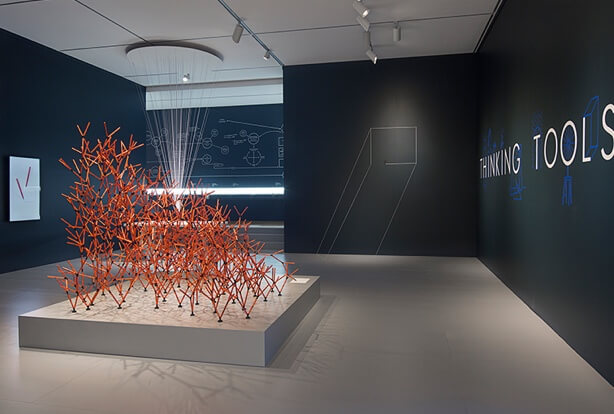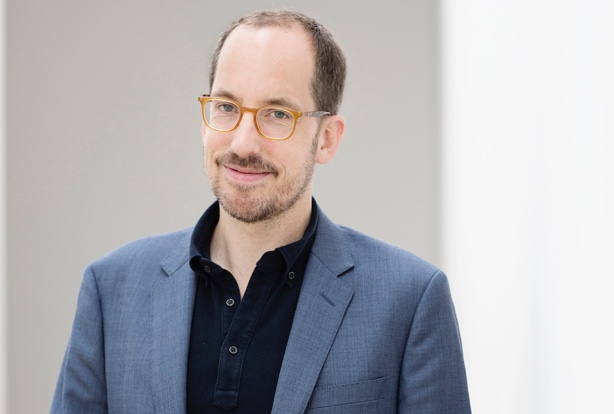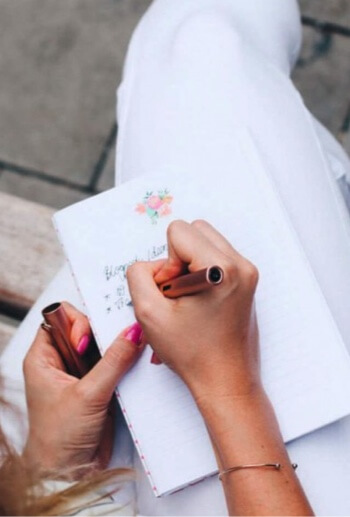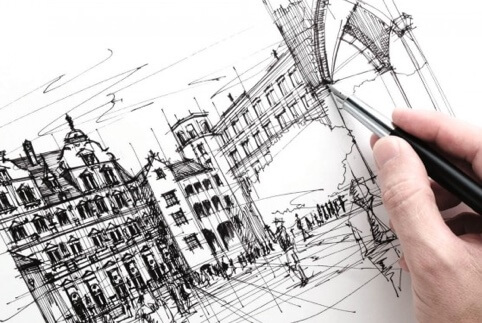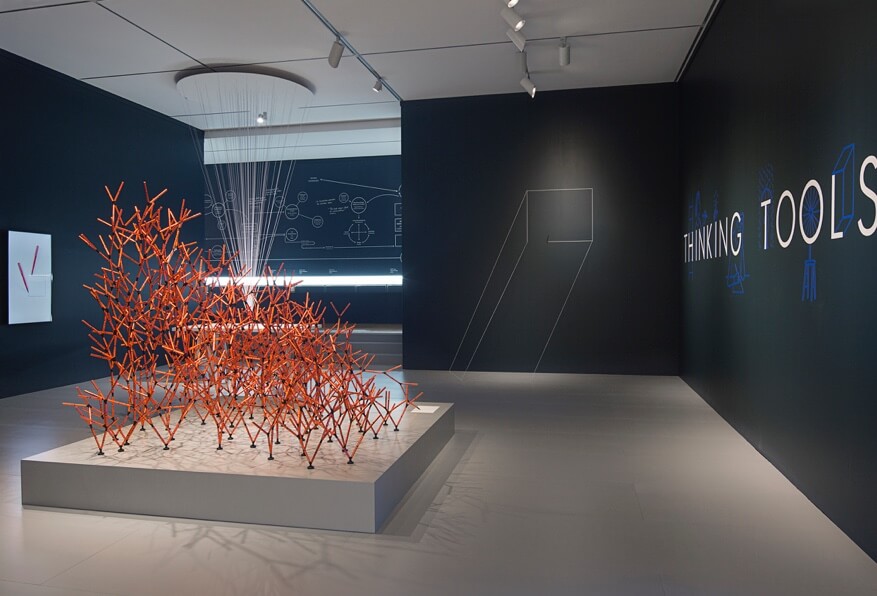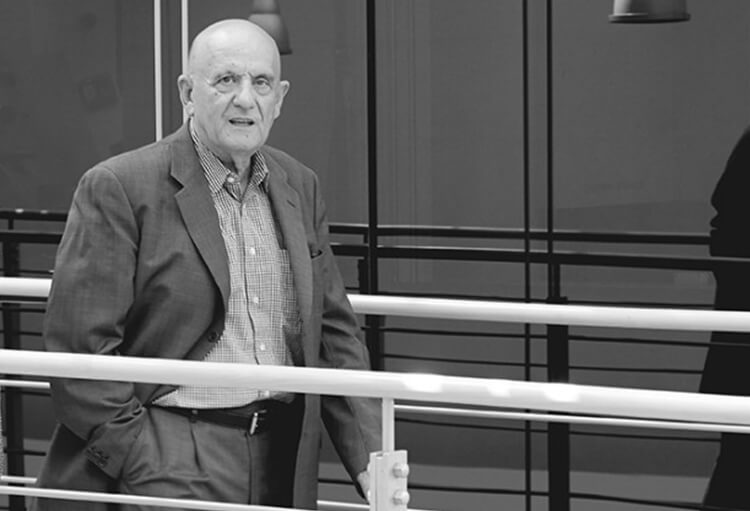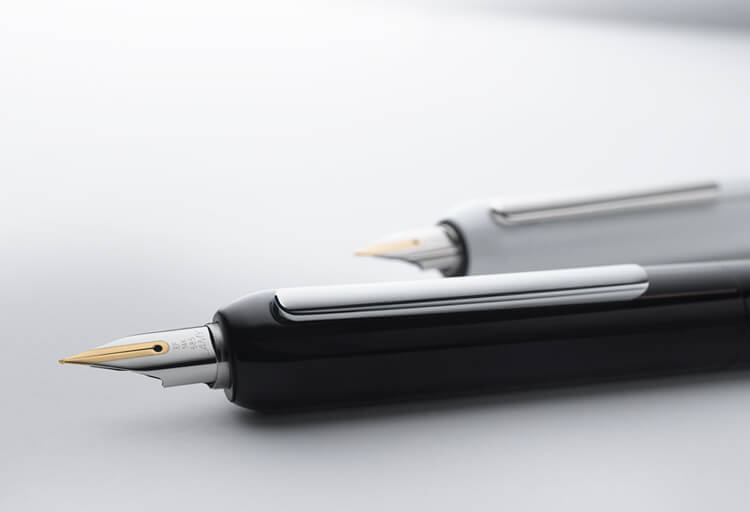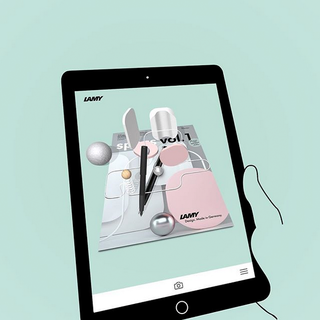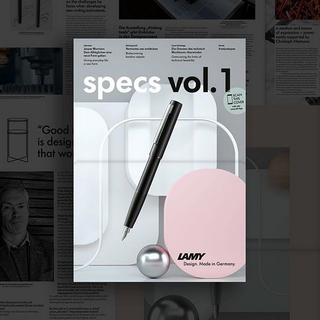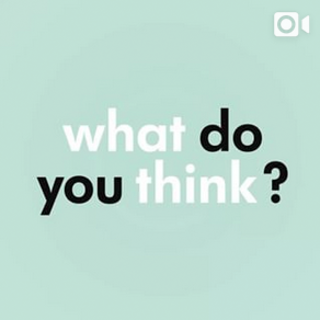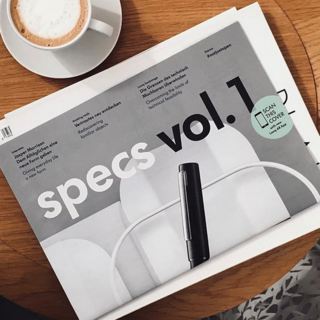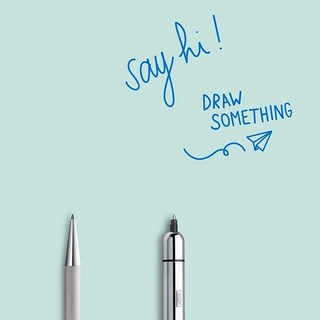Giving everyday life a new form
Creating things which are attractive but not extravagant, unpretentious but not boring, is always a challenge for designers. Jasper Morrison has found a perfect solution with his LAMY aion series of writing instruments.

A conversation with Jasper Morrison about the LAMY aion series of writing instruments he has designed.
Jasper Morrison is a master of restraint. Where other designers give into the temptation of using lurid effects or extravagant luxury, his response is characterised by smart understatement. The things that he appreciates have a clear desire to be nothing special. Whether he is designing chairs, stools or lamps,
mobile phones, clocks or coffee tables, buses, cooking pots or glasses, his creations always look so simple and natural that they seem to have always been there. One of the main reasons behind this is that he has a stubborn streak that he uses to select the right material for the object and keeps on working at every minor detail until everything is absolutely perfect.

A pen is a personal item like a watch or an item of clothing.
However, Morrison does not just focus his designs on what is often anonymously regarded as “normal” by fighting the obsession with originality. He goes one important step further. He describes objects which are quite deliberately designed without contrivances yet retain a great presence as “super normal”, things which have an original appearance and quality which awaken our senses.
He is never interested simply in making something prettier. With an infallible sense of the needs of the user, he repeatedly manages to recreate new, unostentatious yet memorable elements of everyday life.
These are objects which do not push themselves forwards into our consciousness but are there when they are needed, cleverly designed things at a fair price which prove their worth day after day in practice and are often kept by their users for a lengthy period of time.
In this spirit, Jasper Morrison has developed a series of writing instruments made of seamless deep-drawn aluminium, the LAMY aion. There is absolutely no point in looking for ostentation, rings and applications in this series. His writing instruments look as strong and striking as a robust yet handy tool which you simply pick up when you need it.
The LAMY aion series features seamless design.
I quite like my handwriting when it’s flowing well.
How do you go about designing something? Do you first do sketches by hand, Mr. Morrison?
JM: I draw lots of sketches by hand, mostly with a fountain pen.
Do you like your own handwriting?
JM: I quite like my handwriting when it’s flowing well. I don’t write many letters or texts by hand so it is always a bit out of practice but usually gets going well enough.
Writing with a fountain pen, maybe even writing by hand in general, is still encased in an aura of authenticity. In your opinion, what characterizes a writing instrument?
JM: I think it helps if the pen feels good to touch and hold and especially it must provide a good flow of ink and a smooth action on the paper.
Must a pen be just right for the person using it?
JM: A pen is a personal item like a watch or an item of clothing. It says something about our personality. We don’t like watching our pens being used by others. For the design process, that means that we have to give the pen a certain identity or a special character.
In the last 50 years, Lamy has collaborated with many well-known designers such as Naoto Fukasawa, Mario Bellini, Franco Clivio, Richard Sapper and Hannes Wettstein. Did it appeal to you to be the next in this line of illustrious group?
JM: I think myself lucky that people count me as part of a list of such great designers!
For the design process, that means that we have to give the pen a certain identity or a special character.
In Jasper Morrison’s studio in London.
Credit: Jasper Morrison Studio
Morrison’s design studio in Hoxton also serves as a showroom and concept store.
Credit: Jasper Morrison Ltd./Nicola Tree
I didn’t expect the level of technical expertise or the relaxed deadlines in the development of the design.
Do you have a favourite in the Lamy range?
JM: As a long-term Lamy fan (I got my first Lamy when I was fourteen), I have good memories of some of the early designs. My absolute favourite was probably a transparent fountain pen with a screw fill mechanism in transparent orange, with some other internal parts in grey, I think. It’s extremely technical appearance was beautiful and it uniquely embodied my idea at the time of what a pen should be.
You have worked for many different companies. What impressed you the most about working with Lamy?
JM: I didn’t expect the level of technical expertise or the relaxed deadlines in the development of the design.
You got involved with the re-appraisal of industrial processes at an early stage in your career. How did you get the idea of making the LAMY aion from seamless deep-drawn aluminium?
JM: From the very beginning, I wanted to design the pens to be as seamless and sealed as possible. Lamy has managed to make our ideas reality in superb form.
The series is available in two versions – in black and olive silver. Why these two colours?
JM: They fit in perfectly with Lamy design language, and the radially brushed surface gives them an elegant, satin look.
For Jasper Morrison, good design is maximally simple – and maximally functional.
Credit: Alexander Sander
Do you personally have a favourite version of the LAMY aion?
JM: I like them both. I’m currently using the olive silver model.
How do you always manage to make things look simple and almost timeless?
JM: It’s the only way I can think of to design something well. If it isn’t a simplified whole, then it isn’t a finished design.
Did your perspective for a functionally-oriented design, which you developed years ago with your Japanese colleague Naoto Fukasawa under the title “Super Normal”, play a role when working on the writing instrument series for Lamy?
JM: Yes, to some extent every design is influenced by the “Super Normal” goal, though I can’t be sure it is “Super Normal” until I’ve used it for some time.
In your eyes, is a fountain pen above all a tool?
JM: It is a tool but at the same time it is something much more personal. I didn’t use a fountain pen for around 19 years and it was not until I started using one again that I realised how much more satisfactory it makes the writing process.
If it isn’t a simplified whole, then it isn’t a finished design.
The interview was carried out by Thomas Wagner.




